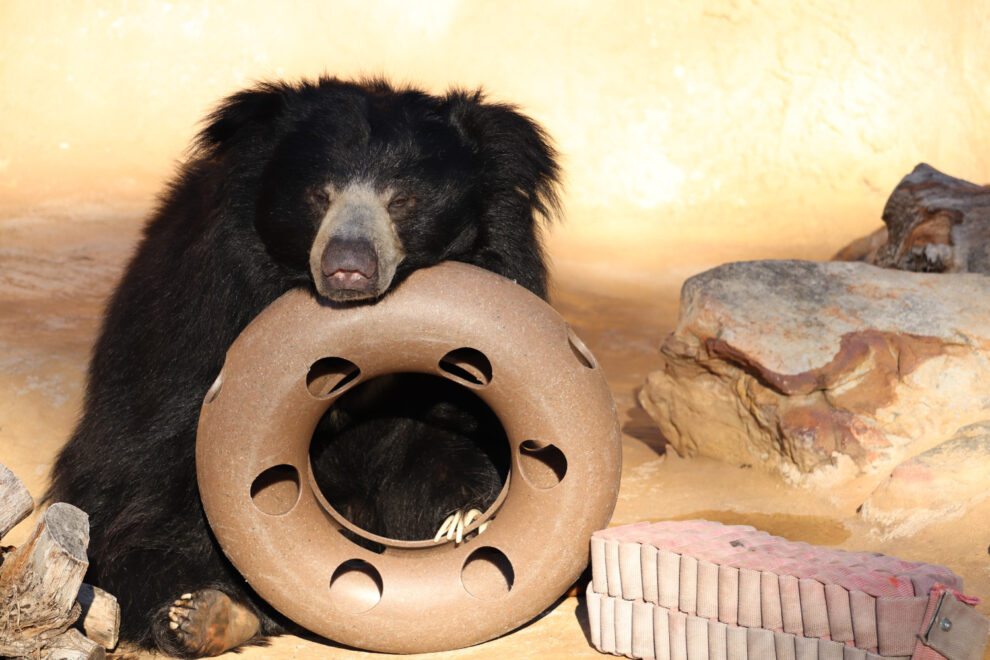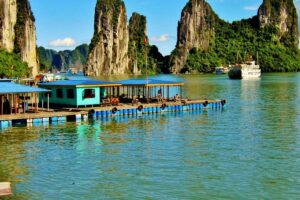Just recently, we woke up to some shocking news. The previous night, a sloth bear had broken into our then unoccupied home in the Nilgiris.
This hungry, curious sub-adult wandered around the property and raided the staff kitchen to find only some sugar. Then, encountering no human interference, he decided to try his luck inside the house. Smashing into a small windowpane, he squeezed his considerable bulk through and sauntered around, tracked by security cameras. Finally, finding nothing of interest, he exited the house by crashing through an upstairs glass door.
Now, I consider myself to be a wildlife enthusiast. We have deliberately kept the property wildlife friendly. No barbed wire, no electric fences, no light pollution. We have had the proud pleasure of leopards, leopard cats, porcupines, civets, barking deer, and much more on our camera traps or on strolls around the small tea estate.
As someone who travels whenever possible into the wild, I have also had my share of encounters with and escapes from wild animals, including elephants and tigers. Each has taught me how to be more alert, better prepared, and ever empathetic towards wild creatures.
As a philanthropist, I have supported several organizations doing exemplary work across the country on ecology and the environment. Many of the projects are about restoring cultures that peacefully co-exist with the non-human world, reducing human animal conflict, stemming bio-diversity loss, and promoting conservation.
Yet, the bear in the dining room was a rude wakeup call. Despite my love for wildlife, I recognise the limits of this romance. I will do whatever it takes to ensure the bear cannot enter the house again.
The elite of India can afford to love wildlife while they are protected from it, in luxury resorts and on safe safaris.
Not everyone is so fortunate.
India has among the highest reported rates of human wildlife conflict incidents, including human injury and death, livestock loss and crop damage. In fact, sloth bears caused the highest number of human deaths among wildlife attacks in some regions of India between 2001 and 2015! In the Sundarbans, one tiger related death occurs every week. In Tamil Nadu alone, from 2019-2022, 152 human deaths were caused by elephants.
Everywhere, it is poor labourers and small farmers that face the major brunt. Most incidents reported are due to elephants and tigers, but other wild cats, wild boars, gaurs, bears and even monkeys can cause serious damage. Of course, animals get killed in larger numbers than humans, due to aggressive retaliation. To give just one example, 222 elephants lost their lives between 2018 and 2021 in such conflicts.
None of this is surprising. India is one of the very few remaining countries in the world where, despite the population and land pressure, we have held the belief culturally sacred that non-human life forms have their own right to life. There are a million stories from around the nation of people protecting wild animals at considerable risk to themselves and their livelihoods. Pastoralists and shepherds renounce a few animals as food for snow leopards in the hills, wolves in the plains and tigers everywhere. Sugarcane farmers let leopards breed undisturbed in the tall grasses before harvest. Tea and coffee planters leave big cats, elephants and gaur to roam freely through the bushes.
But some things are changing, and rapidly. India’s conservation efforts have yielded huge dividends with the population of some species stabilizing or others growing, even while others decline rapidly. Many residents have noticed that there are more gaur, bears, leopards, and tigers in the Nilgiris than there were 30-40 years ago. I have personally witnessed this change in less than 20 years. A sloth bear in the living room and a gaur bull at the gate! A veritable animal stock exchange in the heart of Coonoor.
But the huge increase in land under cultivation around wildlife habitats has led to habitat fragmentation. This has depleted eco-sensitive zones such as forest reserves and wildlife sanctuaries around the country. The resultant degradation of quality and quantity of food from the forest no longer meets the needs of animals who shelter there. This drives animals into human settlements, significantly increasing the chance of conflict.
As the country moves into higher economic growth, the rapid increase in infrastructure such as highways, dams and new urban settlements further shrinks our natural resources and fragments ancient animal corridors.
Climate change layers on more complexity and uncertainty. Downstream effects then change the distribution and the behaviour of humans and animals, forcing them to share more crowded spaces and compete for diminishing resources.
Add to this the inescapable fact that new aspirations are driving younger generations away from traditional wisdom about coexistence and deracinating them from nature. Our education system teaches children zero capacity building on these issues, which might make or break our future. Environmental stalwarts lament that their own children are clueless about water sources, forest plants or animal behaviour. This becomes more pronounced in urban areas covering almost 40% of the nation’s population. Forget about bears and leopards, urbanites barely encounter moths and mongooses anymore. We have little knowledge about most animals or how to deal with them in the wild.
Unfortunately, most of us also cannot appreciate just how the complex world of the wild sustains our very modern lifestyles.
So, we use increasingly innovative ways to kill, trap and drive away animals. They are poisoned, hunted, put in enclosures, driven away with loud music and firecrackers, fenced out, electrocuted, and burnt. Animals that survive this onslaught either retreat or become more aggressive, leading to a vicious cycle of more conflict.
Environmentalists and the government are trying to be equally innovative in preventing conflict, using both technology and the arts. There is experimentation with SMS alert systems, sensors, cameras, eco-sensitive lighting, fencing, patrolling and more. Chief Society Officers (CSOs) offer sensitivity training to students and people living in conflict areas, revive cultural traditions and knowledge; and help increase livelihoods from non-timber forest resources or eco-tourism to positively reinforce the relationship between humans and animals. There is much, much more that can be done, which needs both philanthropic support and government partnerships.
India has the biggest opportunity than any country in the world to realize its ambition of inclusive and abundant prosperity for all, without destroying its ecological base. There is no choice but to do so. Our amazing biodiversity and ancient forests are our insurance against a water starved future and climate-related disasters. They are the natural laboratories for pharmaceutical innovation and for food to keep our population healthy. We need them for the minerals and other resources that will fuel our modern dreams.
We simply cannot afford to saw away at the branch we are sitting on and claim it to be the tree’s problem. All of us, including the elite must learn better not to just co-exist with animals and preserve forests but to ensure that they thrive. This is our existential and perhaps exhilarating, challenge.
My 6-year-old grandson summed it up best. Soothing me in my initial panic, he said, “This is nature. There are predators and prey, not good and bad. No one should say that the bear in the house is bad.” From the new generations, as always, springs the hope.
Source : Mint



























